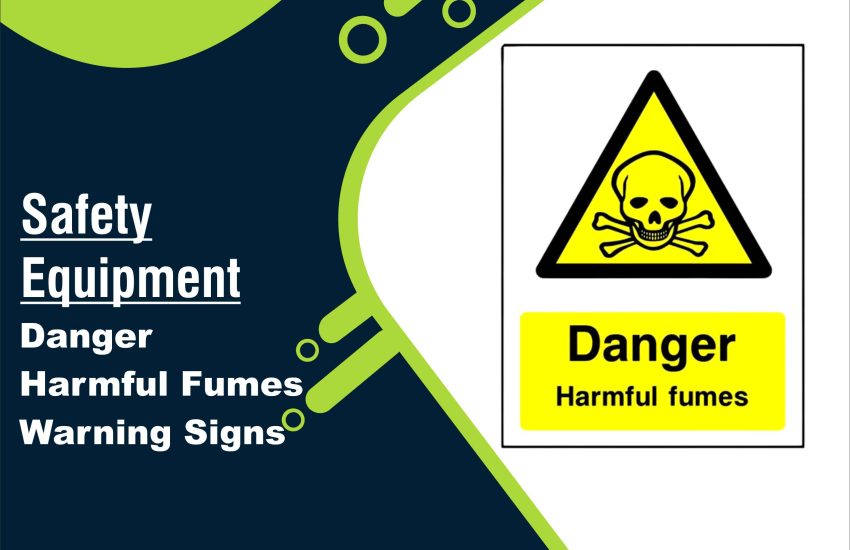Danger Harmful Fumes Warning Signs In today’s world, we are constantly exposed to different chemicals, gases, and pollutants in the environment. Whether at home, at work, or in industrial settings, harmful fumes can pose serious health risks if not properly identified and managed. Recognizing the danger harmful fumes warning signs is crucial for protecting yourself and others from potential harm. This guide provides a comprehensive overview of the signs of harmful fumes, how to recognize them, and essential safety precautions to take.
What Are Danger Harmful Fumes Warning Signs ?
Harmful fumes are toxic gases, vapors, or particles that can be released into the air during various industrial processes, household activities, or natural events. These fumes often contain dangerous chemicals, such as carbon monoxide, ammonia, chlorine, or sulfur dioxide, which can cause severe health problems if inhaled.
Common Sources of Harmful Fumes:
- Industrial emissions: Factories, refineries, and power plants.
- Vehicle exhaust: Car engines emitting toxic gases like carbon monoxide.
- Household cleaners: Aerosols, paints, and solvents.
- Cooking fumes: Burns from overcooked food, especially when using certain oils.
- Natural sources: Volcanic eruptions, forest fires, and radon from soil.
Understanding these sources is important because it helps you anticipate when harmful fumes may be present and identify warning signs early.
Key warnings: Danger Harmful Fumes Warning Signs
1. Sudden Headaches and Dizziness
One of the most common signs of inhaling harmful fumes is a sudden headache or dizziness. These symptoms are often associated with low oxygen levels or the presence of toxic gases such as carbon monoxide. If you experience these symptoms in a confined space, evacuate immediately and seek fresh air.
2. Breathing Difficulties
If you notice shortness of breath, wheezing, or difficulty breathing, it could indicate the presence of harmful fumes like ammonia or chlorine gas. These substances can irritate the respiratory system and lead to chronic conditions if exposure continues.
3. Nausea and Vomiting
Exposure to certain chemicals, such as those found in cleaning products or industrial solvents, can cause nausea and vomiting. If you begin to feel unwell after exposure to a chemical or strong fumes, it’s a sign that the fumes are affecting your body. In these situations, remove yourself from the area and consult a medical professional if symptoms persist.
4. Eye and Throat Irritation
Harmful fumes can irritate sensitive tissues in your eyes, nose, and throat. Red, itchy eyes, a scratchy throat, or coughing are all common symptoms of exposure to toxic gases. Long-term exposure can lead to more severe respiratory problems, so it’s essential to take action as soon as you notice these signs.
5. Fatigue and Weakness
Feeling unusually tired, weak, or sluggish can be a sign of exposure to carbon monoxide or other gases that interfere with your body’s ability to take in oxygen. If these symptoms appear suddenly and worsen with time, it’s important to leave the area and get fresh air immediately.
6. Unusual Smells
While some harmful fumes are odorless, many gases have a strong, distinct smell. For example, natural gas has a sulfuric odor to warn of leaks, while ammonia produces a pungent smell. If you detect any unusual or strong odors in your environment, it could indicate the presence of dangerous fumes.
How to Prevent Exposure to Danger Harmful Fumes Warning Signs
1. Install Proper Ventilation
Proper ventilation is critical to reducing the buildup of harmful fumes in indoor spaces. Ensure that rooms are well-ventilated with windows, exhaust fans, and air circulation systems. If you’re working with chemicals, use a fume hood to safely disperse harmful gases.
2. Use Protective Equipment
In workplaces where exposure to harmful fumes is common, wearing personal protective equipment (PPE) like respirators, masks, and gloves is essential. Make sure you have the correct type of PPE based on the specific type of harmful gas or chemical you’re handling.
3. Regular Maintenance of Equipment
Routine maintenance of appliances, vehicles, and machinery can help prevent harmful fumes from leaking. For instance, regularly check gas lines for leaks, and ensure that combustion engines are properly tuned to avoid excessive emissions.
4. Install Carbon Monoxide Detectors
In any environment where carbon monoxide might be a concern, installing carbon monoxide detectors is a smart move. These detectors can alert you to the presence of this colorless, odorless gas, which is often produced by faulty appliances, chimneys, or vehicles.
5. Proper Disposal of Hazardous Materials
Ensure that toxic substances like paints, solvents, and chemicals are properly stored and disposed of according to safety guidelines. Do not dispose of them down drains or in the trash, as they can release harmful fumes into the air.
Health Effects of Prolonged Exposure to Harmful Fumes:
Prolonged exposure to harmful fumes can have serious consequences, ranging from respiratory issues to chronic diseases like asthma, lung cancer, or neurotoxicity. Some of the long-term effects of inhaling toxic fumes include:
- Damage to lung tissue and airways.
- Increased risk of cancer from exposure to carcinogenic chemicals.
- Cognitive impairment and damage to the nervous system.
Seek Medical Help:
If you suspect you’ve been exposed to harmful fumes for an extended period or if symptoms are severe, seek medical attention immediately. Early intervention can help prevent permanent damage to your health.
Conclusion: Stay Safe from Harmful Fumes
Danger Harmful Fumes Warning Signs and taking appropriate action is essential for protecting your health and safety. Whether you’re dealing with industrial chemicals, household cleaners, or even natural gases, understanding the risks and following safety measures can help minimize exposure and avoid serious health consequences.
Essential Safety Tips:
- Always ventilate areas where harmful fumes are likely to accumulate.
- Be aware of warning signs like headaches, dizziness, and nausea.
- Use protective gear when working with hazardous substances.
- Install safety devices like carbon monoxide detectors to alert you of dangers.
- Follow guidelines for proper storage and disposal of chemicals.


